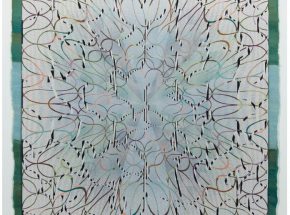

Hovsep Pushman (b. 1877) studied art in Istanbul, Paris, and Chicago, and was later naturalized as a United States citizen. Gaining much of his influence from Asian art, he stressed the importance of three main components in his artwork: color, modeling, and imagination. However, in Pushman’s paintings color seems to be the most important component.
The Ottoman Empire’s entry into World War I precipitated unprecedented violence against Armenians. Armenian families were devastated by conflict between Turks and Armenians. The United States led by President Woodrow Wilson joined the war in 1917 and was highly active in relief efforts to Armenian people. Later that year, on November 27, 1917, Hovsep Pushman’s wife, Julia, led a delegation of Armenians to the White House to meet Wilson. The youngest member of the group, Alidz Kurkjian, presented the painting to Wilson. She gave a short speech expressing the Armenian people’s appreciation for the United States’ efforts to help them in their time of need. The painting’s frame is inscribed with the message that thanks the President “for the hope and gratitude his efforts to help suffering Armenia have inspired in the hearts of all Armenian women.”
The painting depicts Pushman’s niece, Dora, at the age of 14 dressed in traditional Armenian costume. The look of sadness on her face represents the suffering of the Armenian people. It also represents the thousands of children who perished, as well as those who were completely dependent on charity for survival. The flower Dora holds is a Mountain Snowdrop. Some cultures see the flowers as good luck and protection from evil. Its appearance in Armenia is a sign that winter is ending, and that spring is on its way—a sign of hope for better times. Alidz Kurkjian later said that she saw President Wilson wipe tears from his eyes during her presentation of the painting because he was so touched by it. L’Esperance hung in the White House through the remainder of Wilson’s final term in office which ended in 1921. After leaving the White House, the Wilsons moved to a private home on S Street in Washington, DC. The President chose to hang the painting over the fireplace in the home’s drawing room where it is on display to the public today.
